Blooms at the Estates
Here’s a sneak peek at some of the blooms that will be listed in September’s “What’s Blooming” at the Edison and Ford Winter Estates…
Name That Plant, Win That Plant XI:
Be the first to identify this plant and win it! The correct answer will be announced Wednesday, September 1.
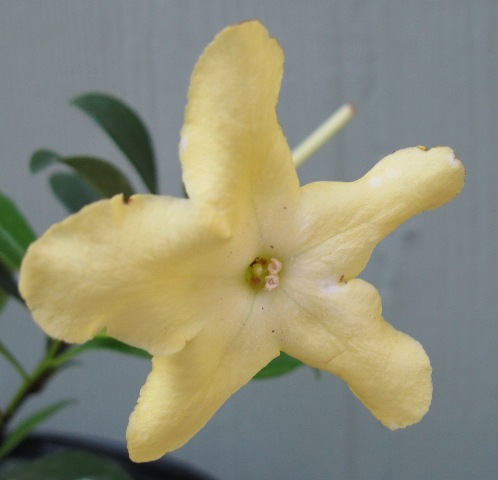
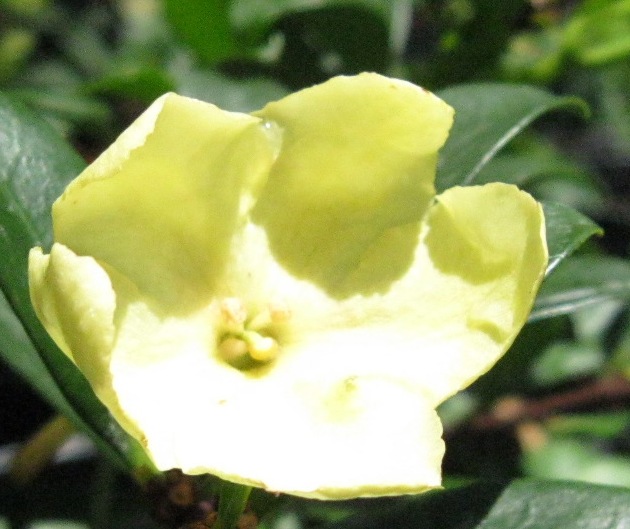
Contest Rules: Leave a comment on Facebook or the Garden Blog with your answer. The person with the first correct answer may choose to receive the mystery plant (if available) or a peace lily. The winner will be announced on the Estates Garden Blog and on Facebook. Plants must be picked up from the Edison and Ford Winter Estates within 7 days of contest end (and, no, we can’t ship them!). If you have won previously, please wait 60 days before guessing again.
Name That Plant X ANSWER: Lipstick Tree
Congratulations to Colin Brenner for correctly identifying this week’s mystery plant!
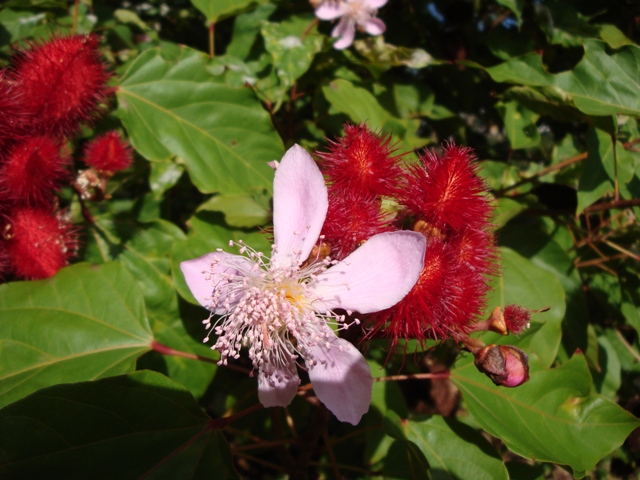
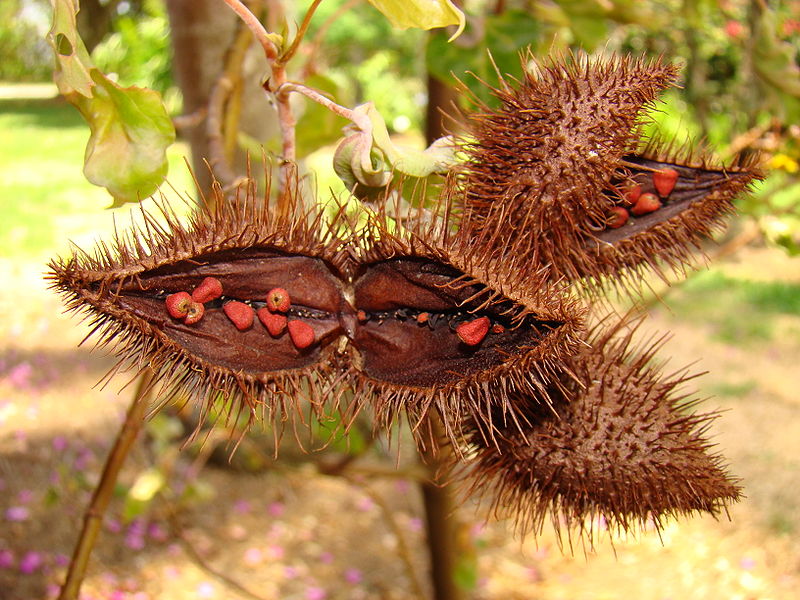
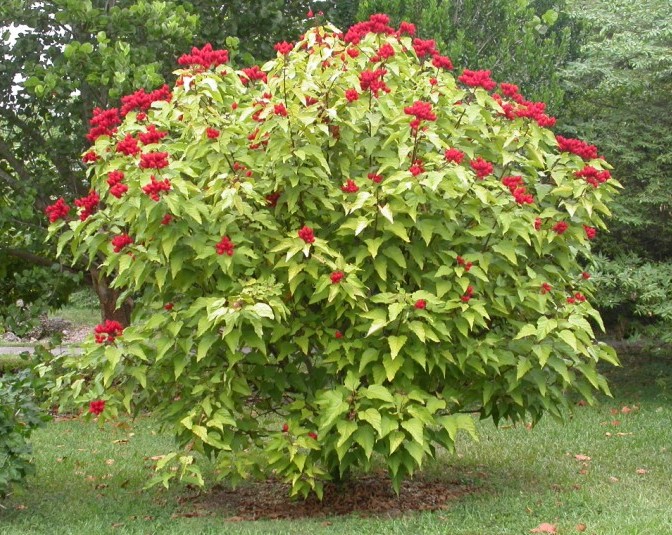
Lipstick Tree, Bixa orellana
If you’ve eaten cheddar cheese, you’ve eaten the product of this plant. The seeds of the lipstick tree, or achiote tree, are used to make annatto, a common food coloring. It was once used as body paint, insect repellant, and ink for hundreds of years by people living in the Caribbean and Tropical Americas. Today it is mostly used to add a reddish yellow color to food and you can find annatto in the spice aisle of your local supermarket.
The seeds from the lipstick tree grow within a bright red hairy seed pod on the branches of the lipstick tree. The tree may reach a height of 20 feet if left untrimmed. It is rated for zones 9B-11 and does best in full sun. Although the pink flowers are quite pretty, it’s the seed pods that will really attract attention to your garden. And if you’re a chef, the seeds can easily be processed at home for use in your recipes. The Estates recently lost a large lipstick tree in the severe January freeze but two small ones managed to survive and are behind the large bougainvillea on the Edison property. We also have a few lipstick trees available in our Garden Shoppe.
Name That Plant IX ANSWER: Dwarf Allamanda
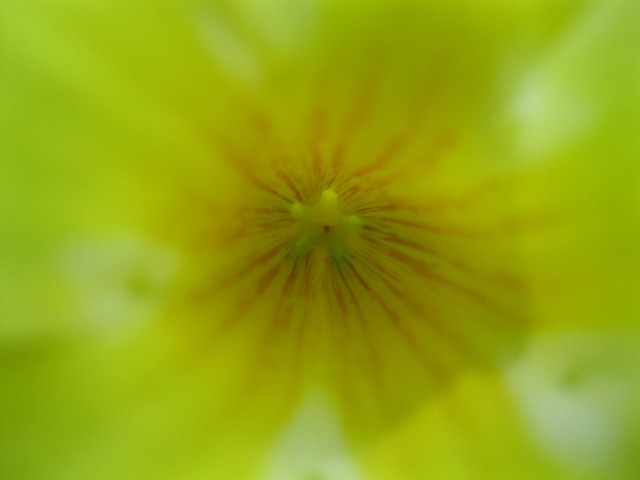
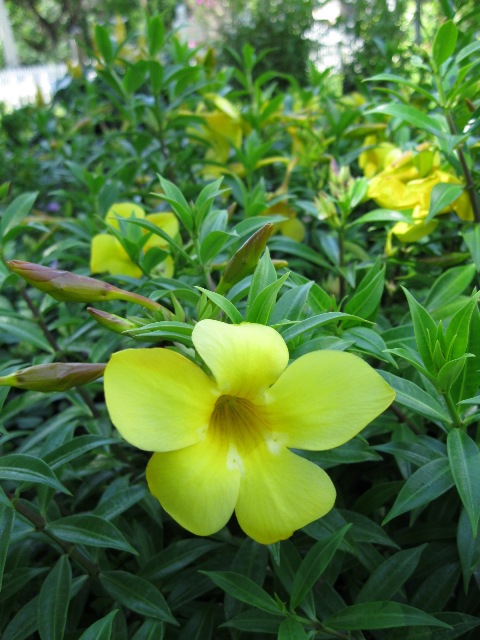 Dwarf allamanda, Allamanda schottii ‘Compacta’
Dwarf allamanda, Allamanda schottii ‘Compacta’
This cultivar is made to withstand our tough Florida summers and look great doing it! The dwarf alamanda should produce bright yellow blooms all summer and into the fall. You may be familiar with the allamanda vine, A. cathartica, which produces similar flowers. Unlike the vine, this cultivar should grow into a small shrub, about four to five feet in height. It blooms best in full sun but will take light shade and may require some watering during the summer.
Like all allamandas, this dwarf variety contains a milky sap called latex, which can be an irritant to some people. This latex is used to make natural rubber and the allamanda vine was one of hundreds of species Thomas Edison experimented with in his quest for an American source of rubber.
Not a single fan took a guess at naming this mystery plant, so no winner this week. Stop by the Estates Garden Shoppe to pick up a dwarf alamanda and peruse the other flowering plants available.
Name That Plant X: WIN THAT PLANT
Be the first to identify this plant and win it! The correct answer will be announced next Wednesday.

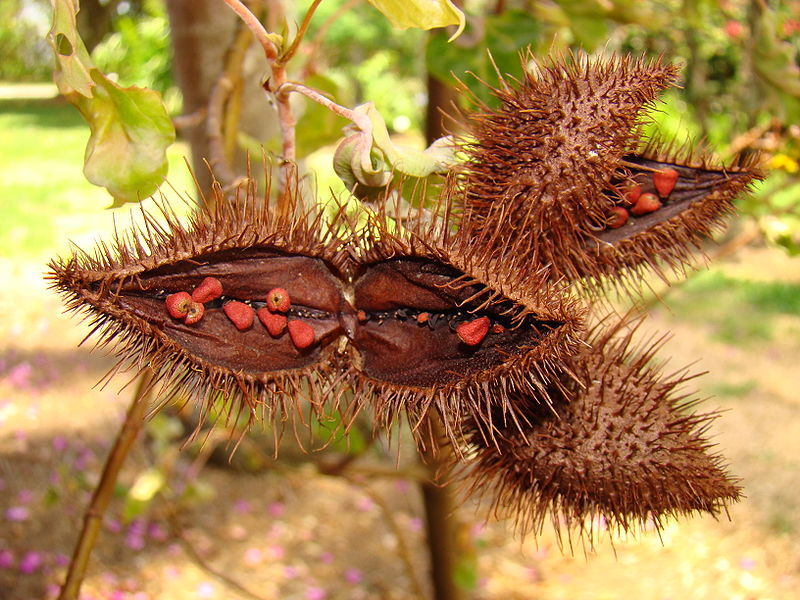
Contest Rules: Leave a comment on Facebook or the Garden Blog with your answer. The person with the first correct answer may choose to receive the mystery plant (if available) or a peace lily. The winner will be announced on the Estates Garden Blog and on Facebook. Plants must be picked up from the Edison and Ford Winter Estates within 7 days of contest end (and, no, we can’t ship them!). Previous winners are not eligible.
Name That Plant VII ANSWER: Golden Dewdrop
Last week we tested your plant knowledge and asked you to identify this plant:
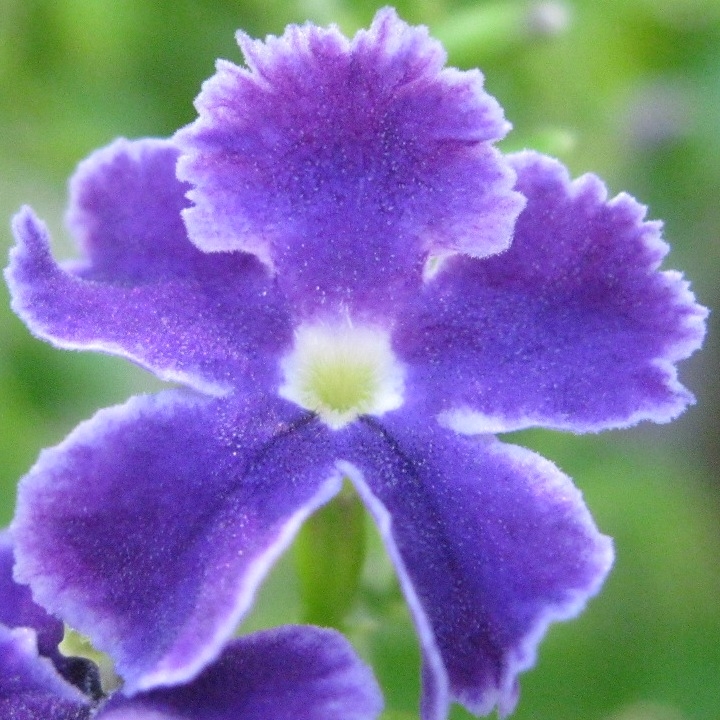
Congratulations to Barbra Goodrich Justice for correctly identifying it. As this week’s winner, Barbra will be awarded her own golden dewdrop plant!
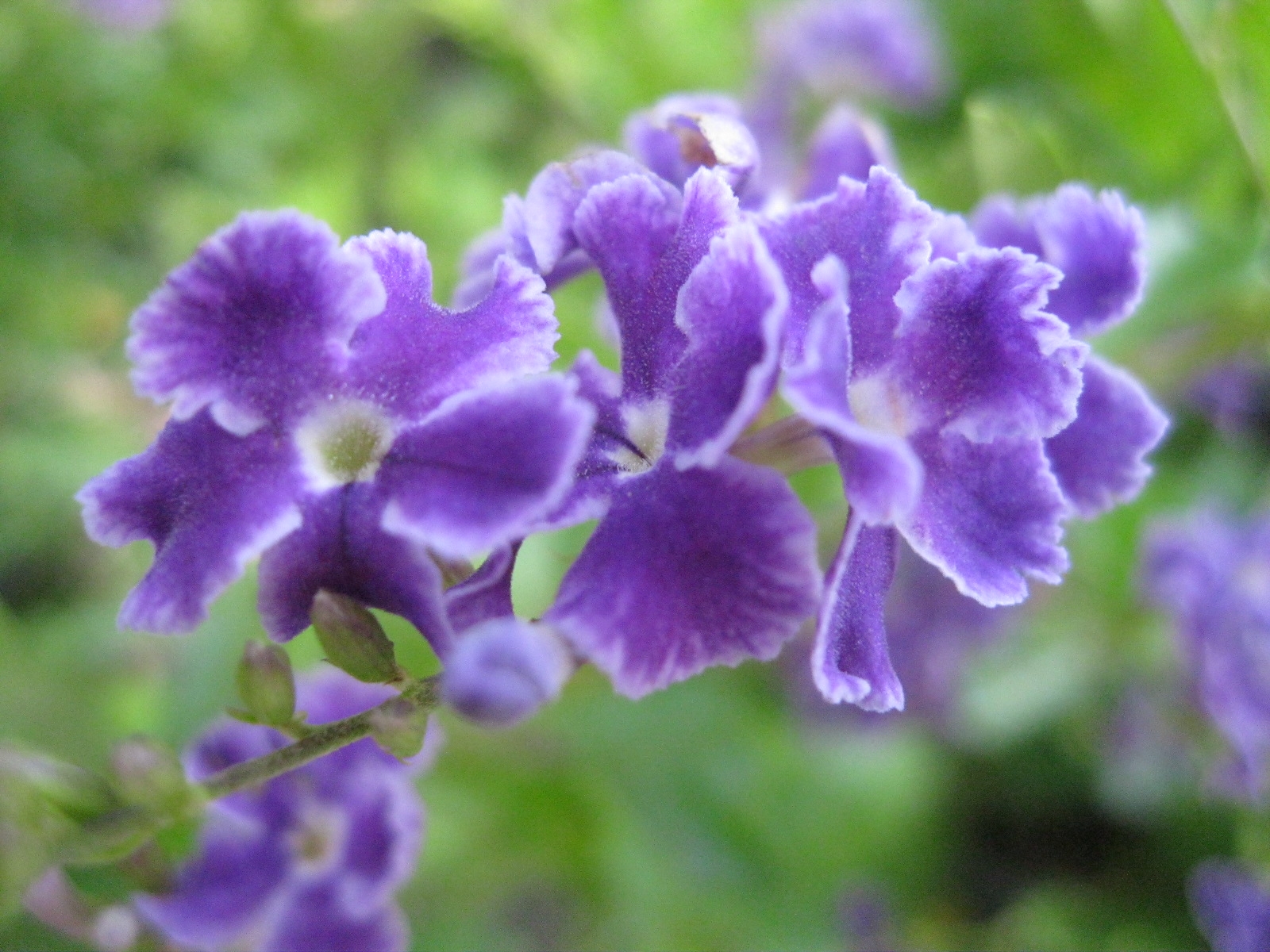
Golden dewdrop, Duranta repens
This Florida native is very versatile – it will grow as a free-form small tree in your yard or bloom just as happily in a hanging basket. The purple flowers of the golden dewdrop are followed by small yellow fruits, thus the common name of this plant. It is a great butterfly plant, rated for zones 9B-11, and is drought tolerant once established. If allowed, it may grow to 15 ft tall by 15 ft wide, but will tolerate frequent pruning.

Although it is unclear when the Edisons first planted golden dewdrop at the Estates, in 1935 Mina led a tour of the gardens and the golden dewdrop was included. Come see our golden dewdrop behind the Estates ticket office or view the white-flowered variety across the street next to Mina’s Moonlight Garden. We have several flowering golden dewdrops for sale in the Estates Garden Shoppe: most are the purple variety and are $6 for a one gallon container.
Name That Plant IX, WIN That Plant
Here’s another chance to win a plant from the Edison and Ford Winter Estates Garden Shoppe. Identify this plant, and it could be yours! We’ll share the answer next Wednesday.
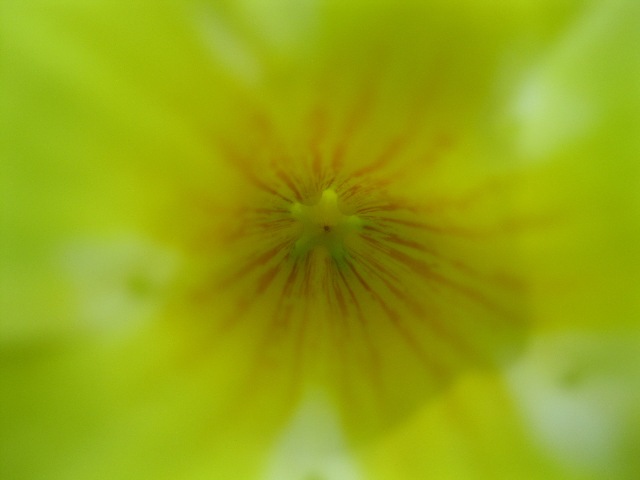
Contest Rules: Leave a comment on Facebook or the Garden Blog with your answer. The person with the first correct answer may choose to receive the mystery plant (if available) or a peace lily. The winner will be announced on the Estates Garden Blog and on Facebook. Plants must be picked up from the Edison and Ford Winter Estates within 7 days of contest end (and, no, we can’t ship them!). Previous winners are not eligible.